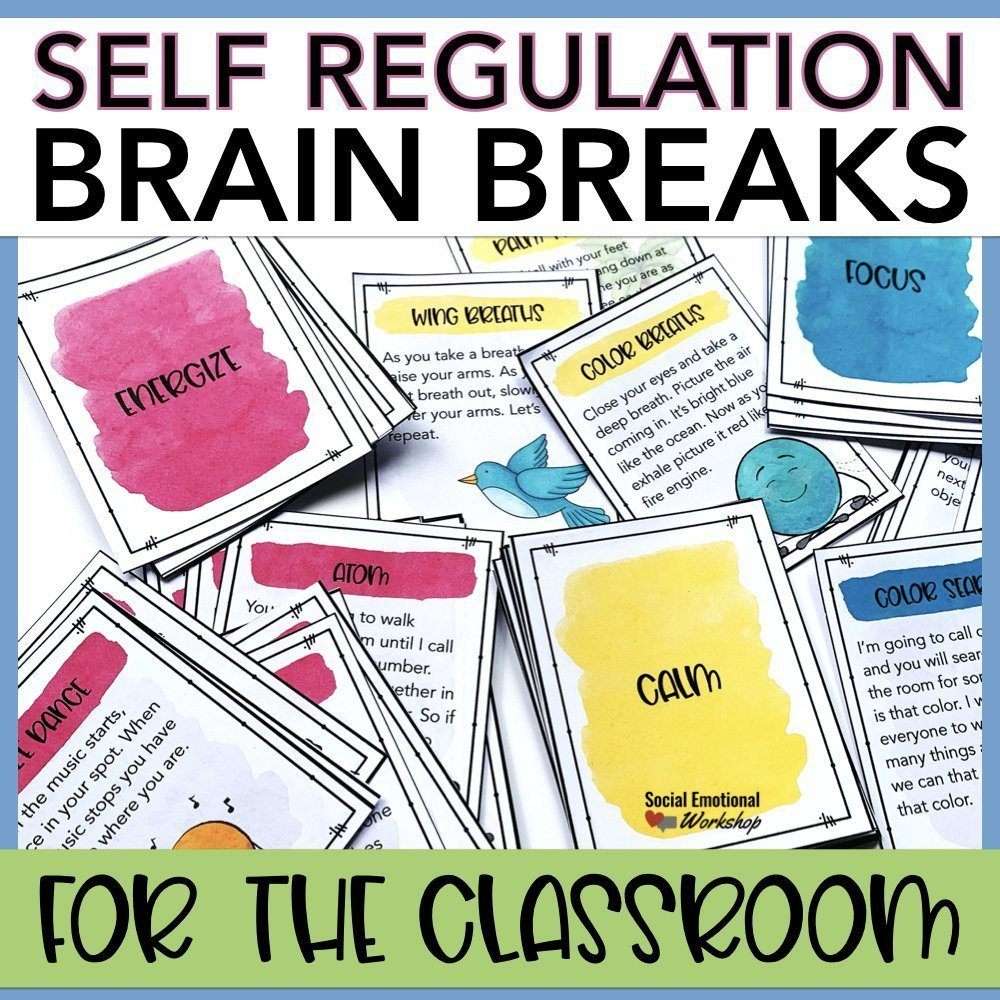Brain breaks are short, simple activities teachers can do during transitions when their class is not 100% present and as a regular part of the schedule. Throughout a school day, there are a lot of demands on students to stay in control of their behavior, complete their work, focus on instruction, and participate. That's a lot of self-regulation for students. It can be beneficial for teachers to use activities and strategies throughout the day that help students regulate.
Beyond just simple brain breaks, we can differentiate brain breaks to be more responsive to your students' needs. Let's check out some ways to begin incorporating brain breaks into your day and how to have them support students to self-regulate.
Differentiating Brain Breaks
Not all brain breaks are created equal. They should be responsive to the students. Sometimes, you need activities that will help students wake up after they have been sitting for too long. Other times, you need something to bring everyone back down to Earth after an exciting activity. Sometimes, you must get everyone back in the learning and thinking mindset.
On your weekly schedule, note how students do before, during, and after different activities. Are they sleepy, active, or scattered? Once you have a good feel for the class flow during the day, note an activity you can do that will bring the class back to just right.
Tips for Brain Breaks
Consider the age of your students. Younger students need more frequent breaks. That doesn’t mean 5-minute activities. It just means they need some help getting refocused and back to work. Think about how you can build regular and natural breaks into your day that give your students a minute to breathe and dive back in.
Plan transitions like you do lessons. Transitions are great opportunities to help students regulate themselves. They can be more than just getting students from one activity to another. Instead, they can set students up to be focused when the next activity begins.
Like any other routine in your class, Brain Breaks need to be taught. Introduce a few at a time and practice them. Organize the breaks, deliver clear instructions, and do a practice round.
Give brain breaks an academic and fun focus. There is no reason not to integrate math problems in weekly spelling.
Use the breaks that correspond to your students’ activity level. Have some wiggle worms? Use the calming or focusing exercises. Have a half-asleep class? Use the energizing or focusing exercises.
Energizing Brain Breaks
Wiggle Down
Have students stand behind their desks with their chairs pushed in. They are going to wiggle their arms and legs. Have students wiggle their right arm for 5 seconds, their left arm for 5 seconds, their right leg for 5 seconds, and their left leg for 5 seconds. Then, do the same for 4 seconds, 3 seconds, and so on.
Dance Like
Students will dance based on the descriptor you call out. Every 30 seconds or so, stop the music and call out another. Here are some examples: Dance like you have a sore foot, just woke up, are dizzy, are in jelly, or are 90 years old.
Name Jam
Students say their name and make a move (e.g., clap, wiggle, snap). The class repeats their name and the action.
Focusing Brain Breaks
I Spy
Find something in the room and tell the students, “I spy with my little eye, something _____________.” Describe it based on one dimension (e.g., color, height, age, etc). Students can also take turns.
Start with a Line
Have students take out a piece of paper and draw a line. You can also photocopy paper with a line on it already. Students then draw an object with a line at the center. You can give them a theme like animals, plants, robots, food, houses, etc.
Alliteration
Students must write a sentence with all the words starting with the same letter. It is fun to choose a relevant theme (e.g., Spring, sports, breakfast). Example: Pam picks pineapples.
Calming Brain Breaks
It's time to bring that energy level down a bit.
Deep Dive
This is a classic deep breath. You can change the amount of time for each, but the key is to inhale and exhale slowly and hold your breath for a certain amount of time. In this one, they inhale for 4 seconds, hold for 2 seconds, and exhale for 5 seconds.
Superhero Pose
Students stand up, feet shoulder-width apart, shoulders back, chest out, hands on hips. Tell them to take a deep breath in, letting it fill up their chest. Stand tall and proud. Then, breathe out slowly, letting their chest down inch by inch, still holding their head high. Repeat five times.
Stretch It
Have students do a series of stretches. Do whichever is familiar or straightforward. Hold each stretch for 15-20 seconds. Stretches: reach for the sky, touch your toes, arm circles, neck circles.
Take a look at your schedule and think about when you could add brain breaks that are responsive and differentiated for your students. Do you want to start the day with a focusing exercise? Do a calming break after recess? Start with one time a day and expand from there.










